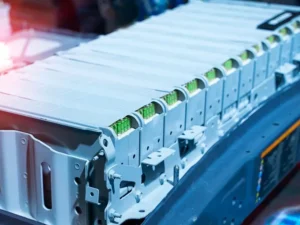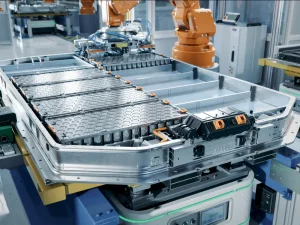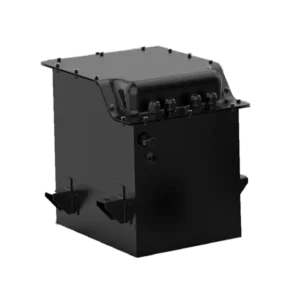This might surprise you. By 2030, more than 150 million electric cars will be on the road. The increasing number of EVs will increase the demand for EV batteries. This raises the greater question of the decade: How are EV batteries made? If you are also going through this query, here is a detailed article to help you find the correct procedure.
First, A Quick Introduction to EV Batteries
Let’s take a quick look at EV batteries! EV batteries are rechargeable batteries used in electric vehicles. They primarily consist of lithium-ion batteries, which are highly capable and energy-giving. In simple words, batteries are the heart of electric vehicles.
EV batteries have versatile applications, including transportation and communication. Let’s tell you something more interesting. Electric batteries can account for up to 40% of an EV’s cost. This creates a buzz about what goes into creating EV batteries. Here is the process describing how EV batteries are made.

How Are EV Batteries Made?
Here comes the main question of the blog: how are EV batteries made? First, you must know that the present design of EV batteries took years to evolve. These batteries are available in fully electric and plug-in hybrid vehicles. EV batteries use lithium-ion, the same technology that charges your smartphones.
EV batteries are efficient sources of energy that last longer than other options. Compared to other alternatives, they come with rechargeable options. Every EV has different power consumption and dissipation power. In general, EV batteries contain the following important parts:
- Cathode: Made from lithium nickel manganese cobalt oxide or lithium iron phosphate (LFP).
- Anode: An electrode made from graphite.
- Electrolyte: A gel or liquid used to keep the two electrodes, which keeps ions moving.
- Separator: A thin sheet separates both electrodes, the anode and the cathode, to avoid short circuits.
If you are wondering how EV batteries are made, here is the explanation. Different EV batteries have different construction methods. However, the basic manufacturing steps are the same for most:
Collection of Raw Materials
Raw materials are the first approach to making EV batteries. It involves extracting and gathering the raw materials. Simply put, it is the collection of raw materials for battery manufacturing. All lithium-ion batteries generally consist of five critical materials, including:
- Lithium
- Cobalt
- Nickel
- Graphite
- Manganese
If you wonder where these materials come from, the answer is mineral mines. Such mineral deposits exist worldwide, including in Africa, South America, and Australia. Moreover, manufacturers can also source some materials from recycling plants, which is cheaper.
Processing Raw Materials
Once collected, raw materials are processed. Manufacturing units clean and refine the raw material. In the first step, lithium is turned into lithium carbonate or lithium hydroxide.
Making the Electrodes
After processing the raw materials, manufacturers begin to make the electrodes.
- Cathode Production
Next comes the step of cathode production. For that, makers mix lithium compounds with other elements like nickel or cobalt. When the mixture turns into a fine powder, it’s baked at a high temperature. Under the influence of the high temperature, the powder takes a solid form. Later, it is applied to thin sheets of aluminum foil using a special coating machine.
- Anode Production
The process of producing anodes is similar to that of producing cathodes. The only difference is in the material used. Here, manufacturers use graphite powder with a binder to form a paste. Later, the paste is coated onto copper foil and dried in an oven.
After drying, heavy rollers flat-dry both electrodes. This helps them store more energy and improves battery life.
Assembling the Battery Cell

Now, it’s time to assemble the battery cell. This step includes stacking or rolling the cathode, anode, and separator together. The design varies from battery to battery.
- Stacking
As the term suggests, stacking is the sandwich-like layering of the EVs. All the elements are arranged one over another, first anode, then separator, and so on.
- Winding
Winding is another common assembly design for EVs. Winding is also known as a “cylindrical cell” and is common in EVs like Tesla.
The next step is casing filling. After stacking or winding, a metal or plastic case soaks up electrodes and separators. The casing is important to keep air and moisture out of the EVs and gives them their final shape and size.
Formation and Testing
Next comes formation and testing! A step that gives the battery cell its life and opens its uses for commercial purposes. First, QC testers charge and discharge batteries under different controlled conditions. It activates the internal chemistry, building a protective layer on the electrodes. It helps manufacturers remove bad and defective cells. Only functional cells move to the next step. Each battery is tested for:
- Capacity
- Voltage
- Resistance
- Temperature behavior
Assembling Battery Modules and Packs
EV batteries don’t use just one cell. Hundreds or even thousands of cells are grouped.
- Modules
A module is a group of cells arranged in a structure. Modules are easier to cool and manage. They also make it safer to isolate a problem cell.
- Battery Pack
A battery pack consists of multiple modules. It includes the following things:
- Cooling systems
- Wiring
- Battery Management System (BMS)
Cooling and Safety Features
EV batteries generate heat during use. If not cooled, this can lead to fires or reduced battery life. So manufacturers add cooling plates, liquid cooling tubes, or even heat pumps. These systems help regulate the battery temperature.
Safety features also include:
- Thermal fuses
- Fire-resistant materials
- Pressure vents
All of these protect the battery and the driver.
Final Testing and Quality Check
Before batteries go into cars, they go through strict testing. These tests check for:
- Performance under stress
- Resistance to shock and vibration
- Water and dust protection
Manufacturers also test batteries in extreme temperatures. Only after passing all tests is a battery pack approved for use in an EV.

Final Words
How are EV batteries made? We hope that this isn’t your question anymore! The above article describes everything about EV batteries and their manufacturing. At Legend Batteries, current production focuses on sustainable practices. For example, manufacturers use recycled materials, reducing dependency on non-renewable natural resources. EVs are undoubtedly the world’s future, and it is important to manufacture them correctly.
